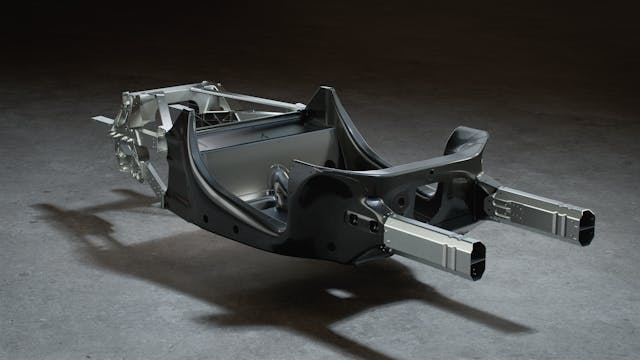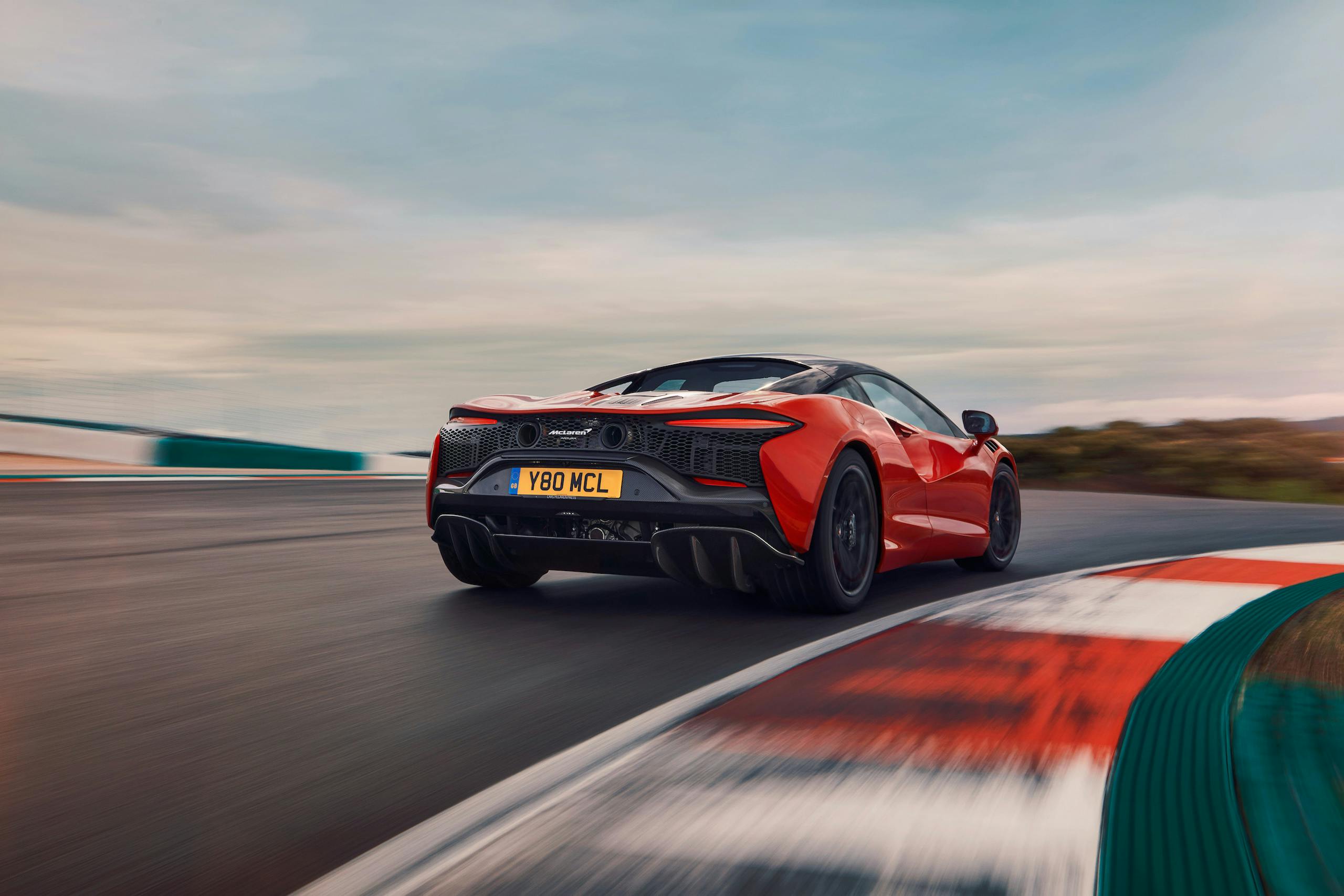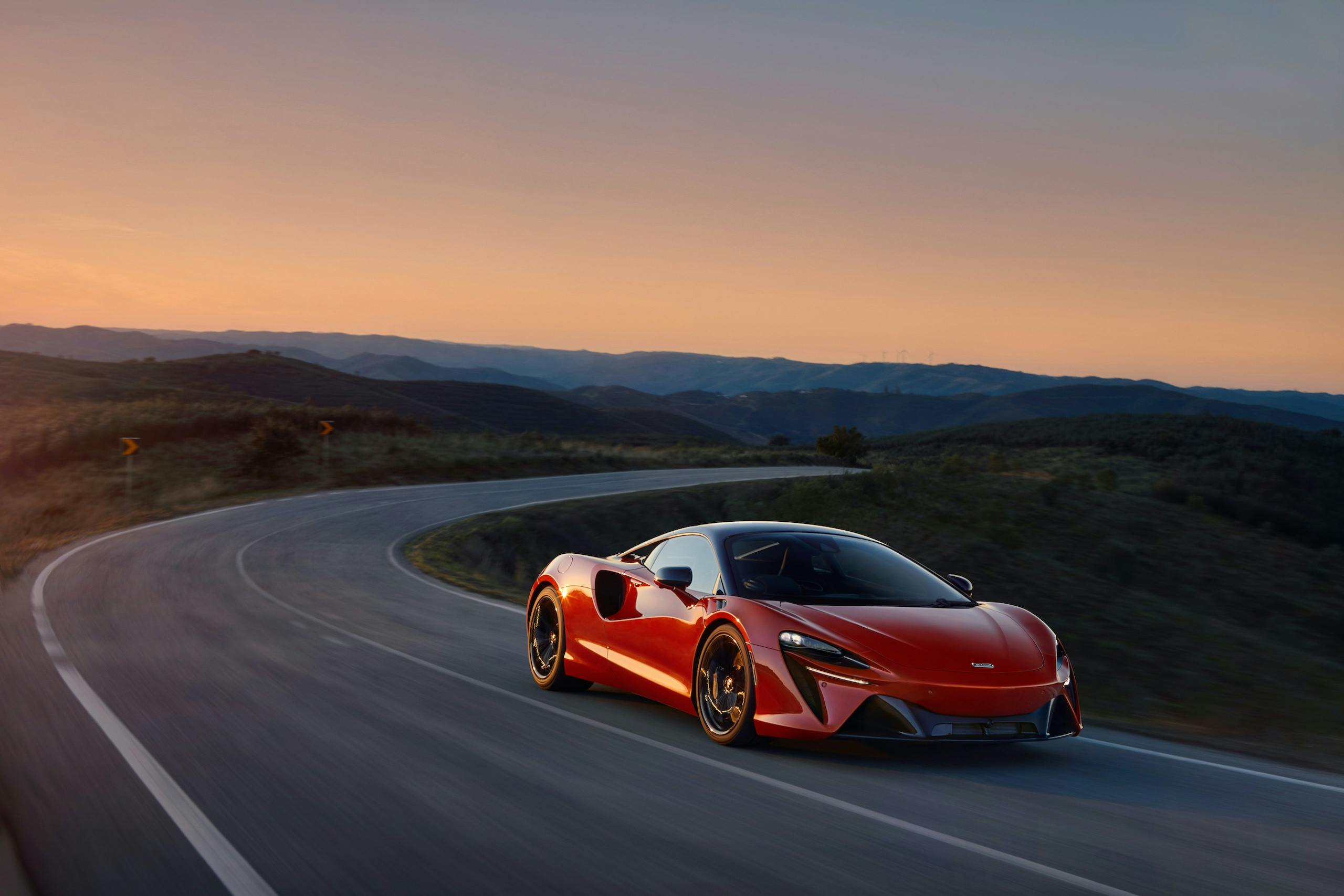How McLaren kept the hybrid Artura on a diet without sacrificing performance
Like the lion’s share of automakers, McLaren is going electric. Not whole hog, mind you—at least, not yet. In the interim between gasoline-drinking, flame-spitting fury and strange Tron-electro overlords zapping about, we have the Artura, Woking’s newest hybrid supercar. Aside from looking fantastic, the Artura is positively dripping in tech and engineering prowess, a combination we’ve come to expect from the folks who brought us supercar legends like the F1, the P1, and the Senna.

To help acquaint automotive media with the intricacies of its newest steed, McLaren sat down a select group of journalists for a virtual technology deep dive, allowing folks to get up close and personal with the engineers, systems, and components that should make the Artura rather special. If you’re in the mood to geek out over high-tech engineering and little details that should add up to a big result, you’ve come to the right place.
Let’s start with the big news, the hybrid powertrain. The Artura’s one-two punch comes courtesy of a 577-hp, 3.0-liter twin-turbo V-6 and a 94-hp electric motor mounted between the engine and the transmission. Both forms of motivation turn the rear wheels exclusively. Total output rings in at 671 horsepower, and the specific output of 481 hp/ton is the highest of any McLaren save the roofless Elva and the king-of-the-wing Senna. Performance figures are equally impressive: 0–60 mph in 3 seconds flat, 0–124 in 8.3 seconds, and a 10.7-second standing quarter-mile.

The M630 V-6 boasts a 120-degree angle between cylinder banks, allowing the turbochargers to nestle betwixt the heads in a hot-V setup. One big challenge to hot-V arrangements is that the heat generated by the turbochargers is concentrated in such a tight area. To address this, McLaren engineers designed specific ducting to direct air from the back of the radiators through the cavity where the turbos reside and out the top of the rear clamshell in a chimney-like apparatus. The net result? McLaren says that the hot air between the cylinder banks drops from a whopping 1652 degrees Fahrenheit to just 464 degrees thanks to the powertrain chimney.

McLaren engineers noted that the overall compactness of the V-6 engine—stem to stern, it’s 7.5 inches shorter and 110 pounds lighter than McLaren’s M840T V-8 (the one in the 720S)—also helped when it came to packaging and efficiency. Combined with the rest of the engineering detailed below, the Artura tips the scales at a commendable 3303 pounds—that’s 575 pounds lighter than Acura’s NSX, another twin-turbo V-6 hybrid supercar, albeit one with an all-wheel-drive setup versus the McLaren’s rear-drive layout.
The Artura’s engine is actually 1.6 inches shorter than the V-8 found in the 720S. That helps keep the center of gravity closer to the ground, which is a boon for handling. To further reduce the engine’s footprint, McLaren engineers switched the camshaft chain to the engine’s back side, allowing the cam phasers to overhang the transmission out back rather than stick out the front of the engine.

As impressive as the gasoline-burning apparatus is, the electric motor is even cooler. The Artura utilizes an axial flux motor, a compact, disc-shaped apparatus optimized for high power density and torque generation. For reference, the motor in the P1 was good for 191.8 lb-ft, but it weighed 84 pounds. The Artura’s, by contrast, is good for 166 lb-ft and it weighs just 34 pounds—that’s a 33 percent gain in power density. Placing it between the engine and the gearbox reduces the need for gears and shafts to deliver the electric power to the transmission, which reduces power losses and overall weight.

The battery pack that spins said motor is a 7.4-kWh unit comprised of nickel, cobalt, and manganese. It offers 19 miles of electric-only driving and can achieve an electric top speed of 81 mph. If you have access to a 3.3-kilowatt AC charger, an 80 percent charge is just 2.5 hours away. Cooling duties are handled via the same refrigerant circuit that is responsible for the cabin temperature.

Electrification was the key driver in the development of the Artura’s all-new platform, dubbed the McLaren Carbon Lightweight Architecture—MCLA for short. McLaren considers the MCLA to be comprised of three key elements: a carbon-fiber monocoque, a chassis structure, and an electrical structure. The monocoque blends 500 individual pieces of carbon into 11 sub-assemblies that ultimately make up the MCLA’s form. On the electrical structure side, McLaren engineers managed a 10 percent lighter wiring harness than that of the 720S—gotta keep those ell-bees in check wherever you can. The car will boast over-the-air updates for around 70 percent of key modules on the Artura, hopefully reducing the number of times customers have to send their cars into a dealership to perform the changes. Likewise, McLaren engineers have opted to run the electrical structure via an ethernet-based system, rather than the CAN-based system that’s been in place since McLaren’s first modern sports car, the MP4-12C.

Dynamically, the Artura boasts an all-new multi-link rear suspension system with a couple key departures from McLaren’s previous setups. Here, the lower wishbone is split into two, and the track control arm is positioned in front of the rear axle, instead of behind said axle as it has been on other McLarens, resulting in a 75 percent gain in rear toe stiffness. The improvements continue with McLaren’s new electronic differential, which replaces the brake-steer system that’s been present in all models up to this one. The e-diff presents more consistent performance than the brake-based system, because it no longer relies on the condition of the brake pads for effectiveness. Likewise, McLaren says that the Artura’s low-speed agility and high-speed stability both improve through the use of this differential.
If you’re still with us this far, we tip our engineering cap to you. If things got a little murky in the middle, but you stumbled through to the end anyways, know this: Through a raft of painstakingly-engineered details, McLaren will stave off the ballooning curb weights that hybridization generally brings. That they’re doing so without sacrificing the breathtaking performance that we’ve come to know and love from the folks at Woking is even more encouraging. Chiefly, the Artura should provide shelter from the looming emissions regulations in major urban centers like London, Paris, and a few American cities that are surely toying with this idea too.
With customer deliveries set to begin in the third quarter of 2021, we’re expecting the Artura to be a hot seller out of the gate, ultimately becoming McLaren’s best-selling model. Given all the tech, thought, and advanced engineering that went into this next-gen supercar, it’s not hard to see why.




